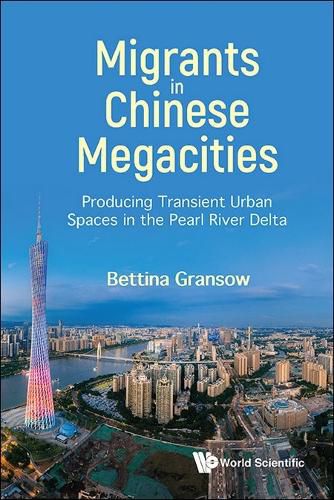Readings Newsletter
Become a Readings Member to make your shopping experience even easier.
Sign in or sign up for free!
You’re not far away from qualifying for FREE standard shipping within Australia
You’ve qualified for FREE standard shipping within Australia
The cart is loading…






This book starts from the assumption that there is no single path of migrant integration or incorporation into the megacity. It then asks what kinds of migrant pathways into the Chinese megacity might be discovered by studying migrants' own agency. Based on over one hundred qualitative interviews conducted in the Pearl River Delta, the micro-studies in this volume show how different high-risk migrant groups (voluntary and involuntary, blue-collar and white-collar, internal and international) connect to the megacity through their everyday routines and practices, constituting and appropriating transient urban spaces. It also examines the responsiveness of the Chinese government's migration policies from the perspective of these different migrant groups. The study brings aspects of migration sociology and risk sociology into dialogue with each other and with urban China studies. Linked to ideas of the global risk society and planetary urbanisation, the study provides an empirical and theoretical building block beyond China's national development. Its findings are expected to contribute to current debates on restricting or promoting migration to (Chinese) megacities.
$9.00 standard shipping within Australia
FREE standard shipping within Australia for orders over $100.00
Express & International shipping calculated at checkout
This book starts from the assumption that there is no single path of migrant integration or incorporation into the megacity. It then asks what kinds of migrant pathways into the Chinese megacity might be discovered by studying migrants' own agency. Based on over one hundred qualitative interviews conducted in the Pearl River Delta, the micro-studies in this volume show how different high-risk migrant groups (voluntary and involuntary, blue-collar and white-collar, internal and international) connect to the megacity through their everyday routines and practices, constituting and appropriating transient urban spaces. It also examines the responsiveness of the Chinese government's migration policies from the perspective of these different migrant groups. The study brings aspects of migration sociology and risk sociology into dialogue with each other and with urban China studies. Linked to ideas of the global risk society and planetary urbanisation, the study provides an empirical and theoretical building block beyond China's national development. Its findings are expected to contribute to current debates on restricting or promoting migration to (Chinese) megacities.